History
The development of the Fokker D.VII finds its way back to the Fokker V.4, the forerunner of the Fokker Dr.I. In order to counterpart the allied air supremacy in summer 1917 the German aircraft factories was demanded to develop a new aircraft. Two aircraft , based on the Fokker V.4 were designed by Fokker. The Fokker V.9, a biplane equipped with initially an Oberursel rated 80 hp, but soon replaced with a 110 hp Le Rhône. Also Fokker V.11 was designed, a biplane with a Mercedes D.III rated 160 hp.
First flights with the V.11 were in December 1917.
The tail of the V.11 was identical to the tail of the V.9, but was changed later and a triangular fin was added.
Also the ailerons were revised and the fuselage enlarged with about 40 cm just behind the centre of gravity.
The aircraft was much better and safer to fly now and was now considered as the real prototype of the Fokker D.VII.
As an interim aircraft the Fokker V.13 entered service as Fokker D.VI, but few were built.
Evaluation of the V.11 was at air base Adlershof, Berlin the well known German pilot Von Richthofen thought the aircraft not suitable to act as for fighter.
It was difficult to handle and direction unstable. It was very manoeuvrable and performed very well, though the climbing speed was rather slow.
Suggesting necessary repairs the V.11 was revised and altered during the weekend. A test flight done by Fokker himself showed the aircraft was much better now.
Fokker persisted Von Richthofen to fly the aircraft again, because several minor steering changes had been added.
Von Richthofen was very surprised about these small modifications and advised other pilot to fly the plane also.
One problem was the rather poor climbing speed of the aircraft equipped with Mercedes D.III engine.
Other engines were available, such as 185 ph Benz Bz. IIIa and 195 hp Benz Bz. IIIb, which would improved the plane, but these engines were not in production yet.
The only available alternative was the 185 hp BMW IIIa, an new engine just entered production. The problem with this engine was that it was not available on large scale yet.
Fokker was ordered to produce a first series of 400 aircraft.
IdFlieg (Inspektion der fliegertruppen), realized that such a large order could not be produced by Fokker- Schwerin only, so the Albatros factories were ordered to produce the Fokker D.VII under licence. Albatros built the Fokker at their two locations, to know Albatros-Werke GmbH at Johannistal and the OstDeutsche Albatros Werke at Schneidemühl.
The aircraft built at Johannistal were designated as Fokker D.VII (Alb), whereas the Fokkers built at Schneidemühl were designated as Fokker D.VII (OAW).
In the end Albatros built more Fokkers D.VII than Fokker did.
One of the problems was that Fokker didn't have any drawings, just sketches and notes. Albatros had to produce production drawings by itself, based on a Fokker built D.VII. This fact plus the use of factory specific standards and production techniques, caused the three Fokker models to resemble much, but hardly any part could be exchanged, not only between the Fokker built aircraft, but also between the Fokker built at both Albatros factories.
The Albatros produced aircraft were thought to be of a better quality than the Fokker built examples, which suffered leaking fuel tanks.
I have to figure out the exact differences between the three models.
Fokker D.VIIF.
The first aircraft were delivered in April 1918 and were equipped with the Mercedes D.III. The original design of this engine dated from 1914/1915 and during the Summer the Mercedes D.III proofed to be insufficient. The allied aircraft used engines rated 220 hp or more, whereas two seats aircraft were equipped with engines rated 350 hp or more.
The German reconnaissance aircraft were equipped with engines rated 260 hp, and performed worse.
The new Benz Bz IIIa rated 200 hp wasn't tested yet in a Fokker D.VII, though one D.VII was experimental equipped with a Benz IVü rated 240 hp.
This aircraft, Fokker V.24 had a much better climbing performance than the original aircraft. The manoeuvrability and high wing load of this model made it unsuitable for the rough air field at the front. The V.24 was later equipped with an BMW IIIa rated 185 hp.
This aircraft was tested in June 1918 and showed excellent climbing capabilities and a better performance a large heights. The installation of this engine differed hardly from the installation of the Mercedes engine, though the radiator was larger, because the engine could produce a power of 240 hp for a while at ground level. This new version was very successful and received the designation Fokker D.VIIF.
It was decided to equip as much as possible Fokkers D.VII with the BMW engine. The only limiting factor was the production speed of the engines.
In Hungary the Allgemeine Ungarische Maschinen-Fabrik A.G. (MAG) built a Fokker D.VII variant.equipped with an Austo-Daimler engine rated 210 hp. Th fuselage was shorter. It was meant to be used by the Austrian army, but wasn't used operational.
Several modifications were tested and especially after the war several engines were used.
Platz and Fokker thought it a good idea to develop a two seats version of the D.VII.The armament was removed and a seat was added in front of the pilot (near the centre of gravity).
This aircraft had an enlarged fuel tank added between the wheels, as was used on the Fokker V.36. The internal fuel tank in the fuselage could be made smaller. This development led to the Fokker C.I
| Dimensions: | |||
| Length: | 7,0 m | Wingspan: | 8,93 m |
| Height: | 2,75 m | Wing area: | 20 m2 |
| Weights: | |||
| Empty weight: | Mercedes D.IIIaü: 959 kg BMW D.IIIa: 910 kg |
Max. start weight: | Mercedes D.IIIaü: 959 kg BMW D.IIIa: 910 kg |
| Performances: | |||
| Max.speed: | Mercedes D.IIIaü: 183 km/u BMW D.IIIa: 205 km/u |
Rate of climb: | - m/min |
| Range: | Mercedes D.IIIaü: ca 1,5 hrsr BMW D.IIIa: ca 2 hrs |
Service ceiling: | Mercedes D.IIIaü: 6000 m BMW D.IIIa: 7000 m |
| Miscellaneous: | |||
| Engine type: | One Mercedes D.IIIa rated 160 hp; Fokker D.VIIF: one BMW IIIa rated 185 hp. |
||
| Crew: | One pilot | ||
| Armament: | Two fixed Spandau LMG 08/15 machine guns Later replaced by two Vickers 7.92 mm machine guns. |
||
| Dimensions: | |||
| Length: | 7,0 m | Wing span: | 8,93 m |
| Height: | 2,75 m | Wing area: | 20 m2 |
| Weights: | |||
| Empty weight: | 670 kg | Max. start weight: | 960 kg |
| Performance: | |||
| Max. speed: | 189 km/u | Climbing speed: | - m.min |
| Cruising speed: | - km/hr | ||
| Range: | - km | Service ceiling: | ca 7500 m |
| Miscellaneous: | |||
| Engine type: | One Armstrong Siddeley Puma rated 230 hp. | ||
| Crew: |
One aviator |
||
| Armament: | None. | ||
| Dimensions: | |||
| Length: | 7,0 m | Wing span: | 8,9 m |
| Height: | 2,75 m | Wing area: | 20 m2 |
| Weights: | |||
| Empty weight: | 700 kg | Max. start weight: | 850 kg |
| Performance: | |||
| Max. speed: | 190 km/hr | climbing speed: | - m/min |
| Cruising speed: | - km.hr | ||
| Range: | - km | Service ceiling: | ca 7500 m |
| Miscellaneous: | |||
| Engine type: | One 185 hp BMW IIIa; from 1925 one 250 hp BMW IV. | ||
| Crew: | One aviator | ||
| Armament: | Two fixed forward firing Spandau LMG 08/15 machine-guns. | ||
In Service with LVA, RNlNAS and NEIAF.
In service with LVA.
The first Fokkers D.VII were interned at the end of the first world war.
The first one was built by Albatros and landed on 15 October, 1918 near Ijzendijke. It was test flown on November 9, 1918 and entered service with registration F227.
The second and third D.VII, were part of a group of six aircraft that were on their way back to Germany. They made a landing on November 13, 1918 near Stein and entered Dutch service with registrations F228 and F229, respectively.
These interned Fokkers were not bought and their fate is unknown.
The LVA needed a standard fighter en had contacted Trompenburg in the summer of 1918. Trompenburg was developing the Spijker V.3 fighter. There was a contract for the delivery of 78 V.3 fighters, and 188 V.4 scouts. both to be equipped with the LeClerget 130 hp powerplant. The RNlNAS had ordered 20 V3 fighters to replace the Thulin K. The NEIAF later also ordered for the supply of two V.2 training aircraft, six V.3 fighters and six V.4 scouts.
Delay in delivery due to problems during the development and construction and the unit was already obsolete.
The V.3 was not until the summer of 1919 ready, but did not even come in performance and was not constructive in order.
At that time Fokker returned to the Netherlands, and succeeded, to take [with the knowledge of the German customs authorities] a large number of aircraft, including 120 and 60 Fokker D.VII Fokker CI , as well as a large amount of materials and means of production.
Wijnmalen, director of Trompenburgstraat and Fokker agreed that Fokker would supply 188 D.VII's and 98 C.I's.
In May 1919, two D.VII and one CI were unexpectedly demonstrated at Soesterberg. The display Spijker V.3 followed in June 1919, so that a proper comparison of the types could be made.
In October 1919 a new contract was signed with Trompenburg for the supply of 164 engines, of which 40 Mercedes D.IIIaü,rated 180 hp and further 124 BMW IIIa rated 185 hp plus 92 Fokkers C.I and 72 Fokkers D.VII.
Later, another contract for the delivery of 20 Fokkers D.VIIF for the RNlNAS followed.
In early November 1919, the aircraft division of Trompenburg was abolished and there was a lot of wrangling about tje compliance of the contracts.
In the end 20 Fokkers D.VII plus 60 Fokkers C.I were delivered to the LVa plus 20 examples to the RNlnAS later another six examples were delivered to the NEIAF.
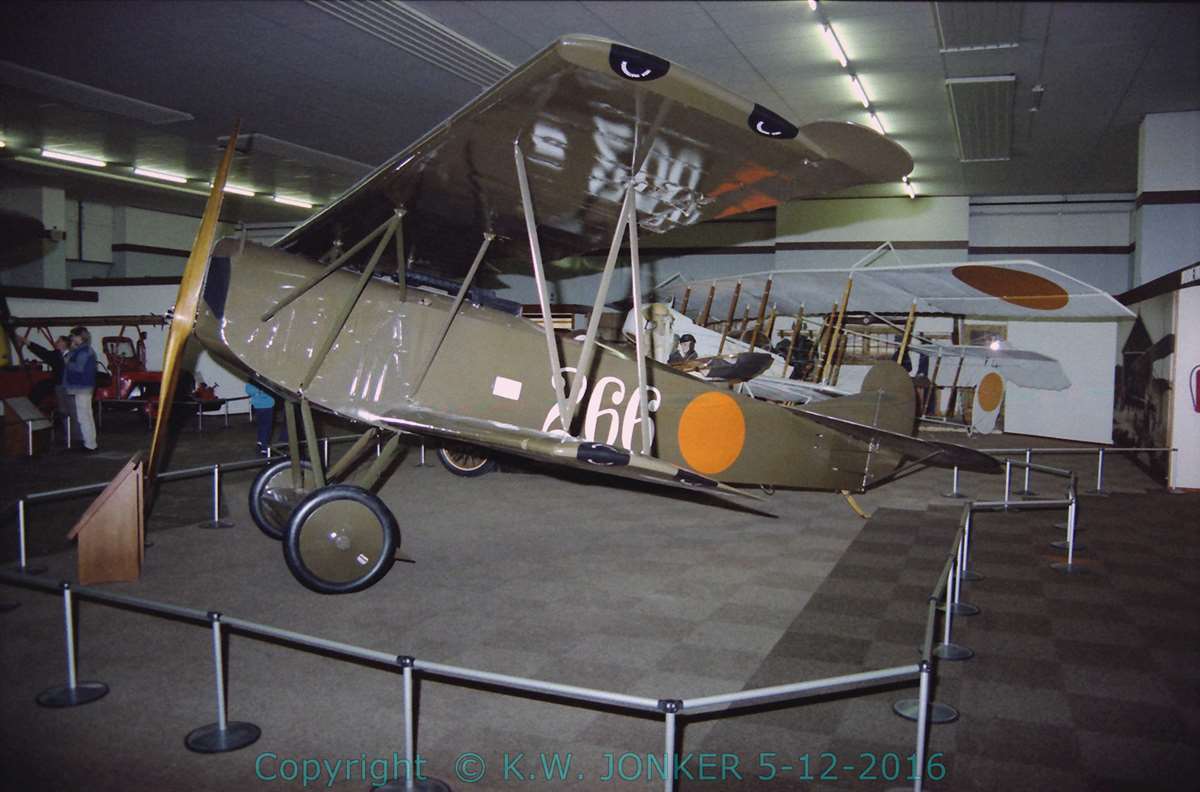
Restored Fokker D.VII with serial 266, photographed in 1987 in the Militaire Luchtvaart Museum at Soesterberg.
The first ten aircraft for the LVA were equipped with a Mercedes D.IIIaü motor, the other ten examples had the BMW IIIa.
Homebuilt examples
Quite soon the 255 and 267 were written off due to a crash. In the spring of 1921 the Technical Department of the LVA built a new aircraft from spare parts and parts of these two aircraft and entered service with registration 270 employed.
In 1926 was followed by a second example, which was also built out of spare parts and parts from crashed aircraft and entered service with serial 271.
Weather Flights
From the beginning of Jaen 20 were in favor of the KNMI in The Bilt meteorological flights operated. Almost every day increased a Fokker D.VII, with a meteograph under the wing and climbed to around 6000 level. Between 1920 and 1933, 4195 of such flights made.
Modernization.
Initially, the Fokker D.VIIs were equipped with two Spandau machine guns. The Dutch army (and navy) chose in 1922, however, the 7.9 mm Vickers machine gun like standard machine gun, which was designated as Aircraft Machine Gun M.18.
In 1926 twenty BMW IV engines 250 HP were purchased to replace. The now obsolete and worn D.IIIaü Mercedes and BMW IIIa engines [The BMW IIIa was no longer in production; The BMW IV was actually the same engine as the BMW IIIa, but with a larger cylinder volume.
In practice, the new engines turned out to be the BMW IIIa, less reliable, which earned the higher power no significant improvement in performance. In any case, the Fokker D.VII 250, 251, 256 t / m 259, 265 and 271 were equipped with the new engine.
In service with RNlNAS (= MLD).
The D.VII's were delivered in 1920. These equipped with BMW IIIa engines, so these aircraft were Fokkers D.VIIF.
In 1925, the RNlNAS bought 25 BMW IV engines to replace the BMW IIIa of the remaining Fokkers D.VII. Except the engines some other modifications were added, such as a retractable radiator, a headrest and another cowling.
In 1930 the Technical services built a new Fokker D.VII from available spare parts. This aircraft was registered D-40.
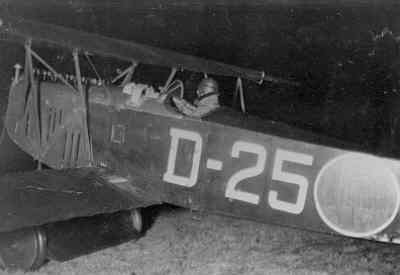
[Enclosed photo from BeeldBank NIMH. Click on photo for ordering information]

[Enclosed photo from BeeldBank NIMH. Click on photo for ordering information]

[Enclosed photo from BeeldBank NIMH. Click on photo for ordering information]
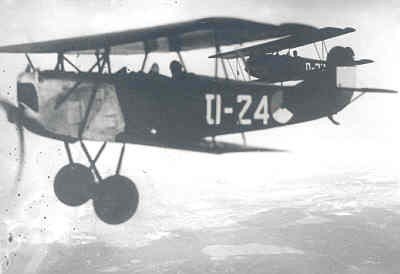
[Enclosed photo from BeeldBank NIMH. Click on photo for ordering information]

[Enclosed photo from BeeldBank NIMH. Click on photo for ordering information]

[Enclosed photo from BeeldBank NIMH. Click on photo for ordering information]
Note the roundels on the wings!

[Ingesloten foto van BeeldBank NIMH. Klik op de foto voor bestel-informatie]
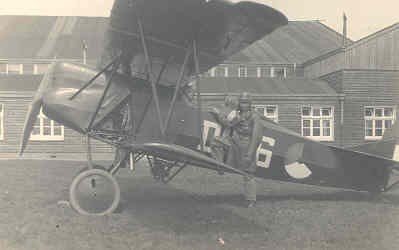
[Enclosed photo from BeeldBank NIMH. Click on photo for ordering information]

[Enclosed photo from BeeldBank NIMH. Click on photo for ordering information]

[Enclosed photo from BeeldBank NIMH. Click on photo for ordering information]
In Service with ML-KNIL.
The Fokker D-VII entered service in 1922 and was equipped with an Armstrong-Siddeley Puma rated 230 hp.
The main reason for the use of this engine was that the same engine was in use with the DeHavilland DH-9.
The first flight on this configuration was February 25, 1921. The aircraft crashed from a height of about 80 m because of an engine failure. A second test on April 27, 1921 was successful.
The Fokker D.VII was withdrawn from use in 1926, because it was rather disappointing. Many problems occurred with the engine and the synchronisation mechanism.
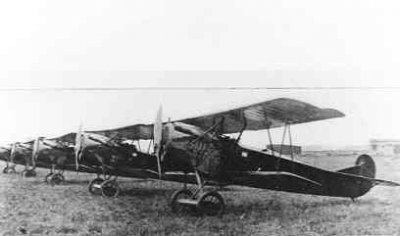
[Enclosed photo from BeeldBank NIMH. Click on photo for ordering information]

[Enclosed photo from BeeldBank NIMH. Click on photo for ordering information]
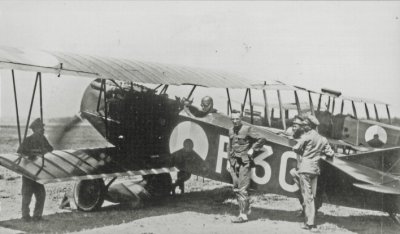
[Enclosed photo from BeeldBank NIMH. Click on photo for ordering information]
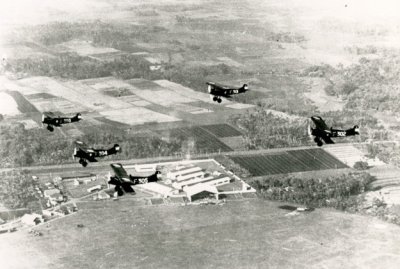
[Enclosed photo from BeeldBank NIMH. Click on photo for ordering information]
Serial overview LVA , RNlNAS and NEIAF.
Serial overview LVA.
Below an overview of the interned German Fokker D.VII aircraft.
| Serial | German Serial | Constr. nr. | Date in service | Date out of service | Notes |
|---|---|---|---|---|---|
| 227 | 5584/18 | 15-10-1918 | |||
| 228 | 4293/18 | 13-11-1918 | |||
| 229 | 2176/18 | 13-11-1918 | |||
| - | 4000/18 | 13-11-1918 | |||
| - | ????/18 | 13-11-1918 |
| Serials
Serials
|
Constr. nr.
Constr. nr.
|
Date in service
Date in service
|
Date out of service
Date out of service
|
Notes
notes
|
|
|---|---|---|---|---|---|
| 250 | 17-05-1920 | 29-03-1938 | Written off after being heavily damaged and used for spare parts | ||
| 251 | 22-05-1920 | 31-05-1929 | Destraoyed afterd emergence landing and written off | ||
| 252 | 21-05-1920 | 18-05-1925 | Written off | ||
| 253 | 25-05-1920 | 1930?? | Written off | ||
| 254 | 04-05-1920 | 28-03-1924 | Crashed and written off | ||
| 255 | 14-05-1920 | 05-08-1920 | Written off after accident. Used for spare parts; Some parts used to built up D.VII 270 | ||
| 256 | 12-05-1920 | 07-08-1935 | 1459 hours in 1934. Written off | ||
| 257 | 21-05-1920 | 29-03-1938 | Written off | ||
| 258 | 05-05-1920 | 16-10-1935 | Fuselage rejected; Written off | ||
| 259 | 20-05-1920 | 29-03-1938 | Written off | ||
| 260 | 24-05-1920 | 12-12-1935 | July 1932 used in iceland for meteorological research. Spetember 1933 returned to the Netherlands; December 1935 fuselage rejected and written off. | ||
| 261 | 04-05-1920 | 17-09-1922 | Landing accident and written off | ||
| 262 | 14-05-1920 | 11-02-1931 | Written off | ||
| 263 | 03-06-1920 | 05-01-1937 | December 15, 1936 slided and destroyed; Written off | ||
| 264 | 14-06-1920 | 16-11-1927 | Written off after emergency landing | ||
| 265 | 27-05-1920 | 25-10-1933 | Written off | ||
| 266 | 05-05-1920 | 12-12-1935 | Fuselage rejected; Written off | ||
| 267 | 06-1920 | 1921 | Written off; Some parts used to built up D.VII 270 | ||
| 268 | 08-06-1920 | 29-03-1938 | Written off | ||
| 269 | 21-05-1920 | 09-12-1927 | Flew against a High voltage cable; Written off | ||
| 270 | 08-04-1921 | 05-03-1936 | Written off. | ||
| 271 | 1926 | 15-07-1930 | pilot dropped out of the aircraft and was killed while practising a loop. Aircraft destroyed and written off | ||
| 600 | Gift from Fokker to commander W. Versteegh. Two seat D.VII with enlarged wing span. |
||||

(External link:) The instrument panel of the Fokker D.VII in the (Dutch) Military Aviation Museum at Soesterberg.
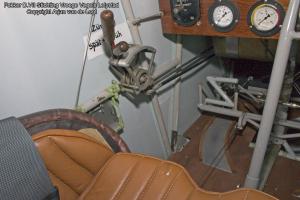
(External link:) (Part of) the interior of the Fokker D.VII in the (Dutch) Military Aviation Museum at Soesterberg.

Serial overview RNlNAS.
| Serials
Serials
|
Constr. nr.
Constr. nr.
|
Date in service
Date in service
|
Date out of service
Date out of service
|
Notes
notes
|
|---|---|---|---|---|
| Entered service in 1920; Most were withdrawn from use in 1937 | ||||
| D-20 | 4404/18 ? | 1920 | 16-03-1937 | Still exists in Deutsche Museum at Munich. |
| D-21 | 1920 | 02-05-1930 | Crashed near naval air station De Kooy | |
| D-22 | 1920 | 20-10-1934 | Written off | |
| D-23 | 1920 | 1937 | Written off | |
| D-24 | 1920 | 20-07-1936 | Crashed | |
| D-25 | 1920 | 17-03-1937 | Written off | |
| D-26 | 1920 | 1937? | Written off | |
| D-27 | 1920 | 05-02-1934 | Written off | |
| D-28 | 1920 | 30-06-1937 | Written off | |
| D-29 | 1920 | 16-07-1935 | Crashed near naval air station De Kooy | |
| D-30 | 1920 | 18-10-1935 | Written off | |
| D-31 | 1920 | 14-12-1929 | Damaged and written off | |
| D-32 | 1920 | 1937? | Written off | |
| D-33 | 1920 | 1937? | Written off | |
| D-34 | 1920 | 14-04-1930 | Written off | |
| D-35 | 1920 | 22-05-1934 | Written off | |
| D-36 | 1920 | 1937? | April 1936 emergency landing; Written off | |
| D-37 | 1920 | 08-02-1934 | Written off | |
| D-38 | 1920 | 06-04-1920 | Written off | |
| D-39 | 1920 | 24-10-1936 | Written off | |
| D-40 | 1930 | 1937 | Home built, entered service in 1930; | |
Serial overview NEIAF.
| Serial | Constr. nr. | Date in service | Date out of service | Notes |
|---|---|---|---|---|
| F-301 | 1920 | 1926 | ||
| F-302 | 1920 | 1926 | ||
| F-303 | 1920 | 1927 | ||
| F-304 | 1920 | 1926 | ||
| F-305 | 1920 | 1926 | ||
| F-306 | 1920 | 1926 |
1/72nd Scale
Kits
- AB model
- Kit 72020: Fokker D.VII Twee-zitter
- Kit 72023: Fokker D.VII MAG
- ESCI
- Kit 9015: Almost the same as the revell-kit, though the wing construction is not correct. This kit is no longer in production.
- MBC Models
- Kit 3: Fokker D.VIIF MLD (equipped with BMW engine)
- Omega
- Kit 72056: Fokker D.VII MAG.
- Kit 72044: two seat Belgian Fokker D.VII.
- Kit 72186: Fokker DVII with BMW
- Kit 72054: MAG Fokker DVII
- Revell
- Kit 04177 / 04194 an rather old, though good model, first released in the sixties.
- Roden released several variants of the Fokker D.VII.
- Kit 033: Fokker D.VII (Alb.) late
- Kit 035: Fokker D.VII (Alb.) early
- Kit 013: Fokker D.VII OAW Early
- Kit 029: D.VII OAW Mid
- Kit YY5: D.VII OAW Late
- Kit 031: Fokker D.VIIF Late
- Kit 025: Fokker D.VII early
- VAMI
- Kit 3: Fokker D.VIIF MLD (equipped with BMW engine)
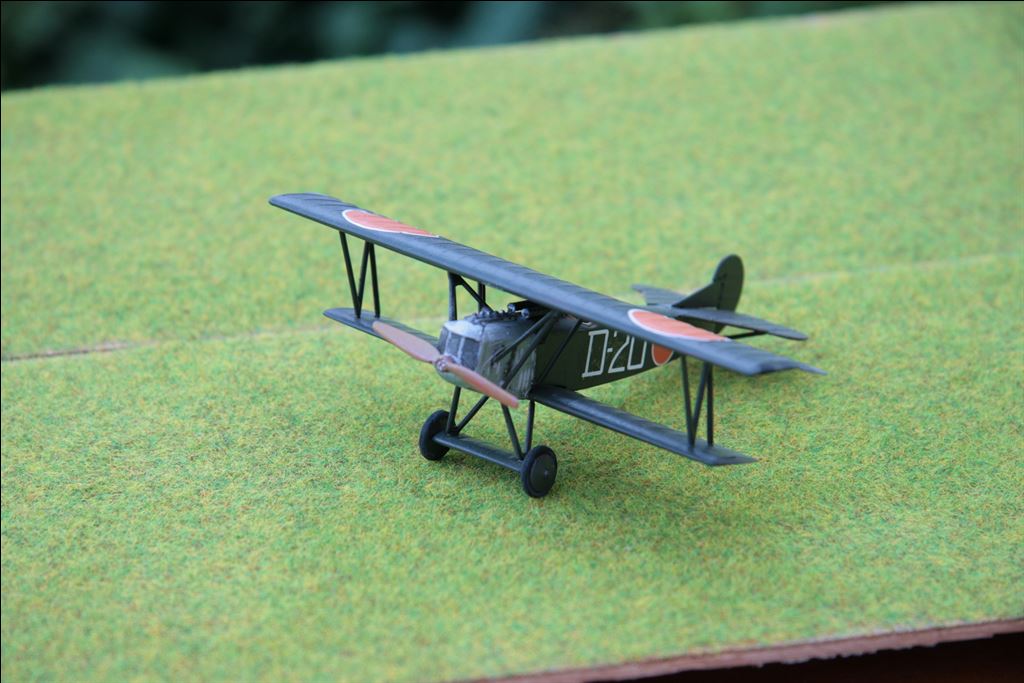
A model of a Fokker D.VII of the RNlNAS, built in 2005.
The kit used is also from Revell, with decals from Blue Rider..
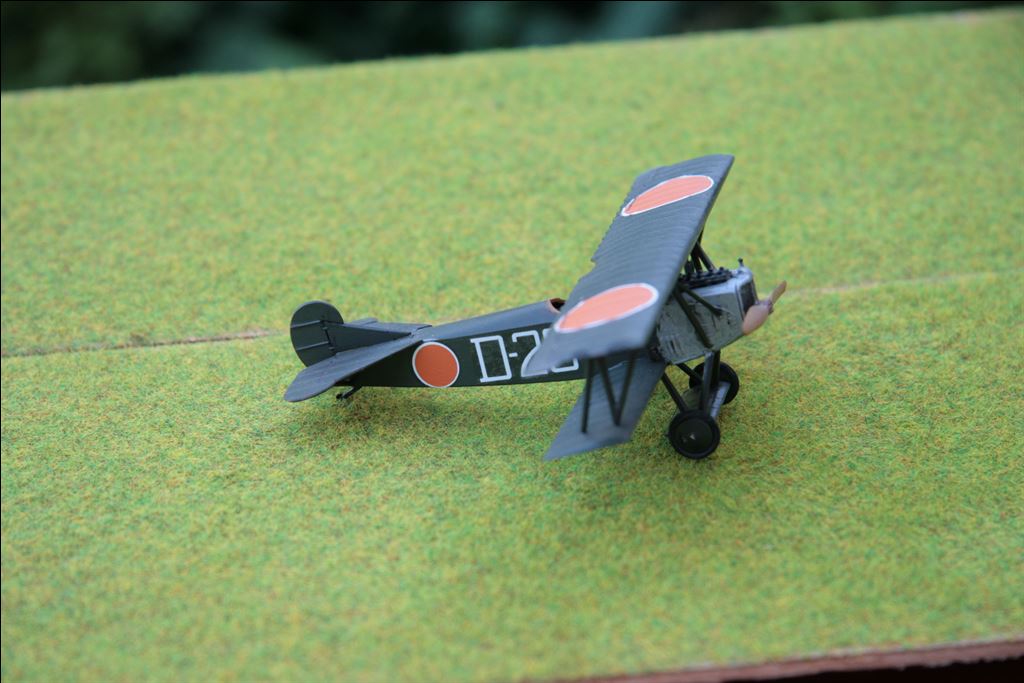
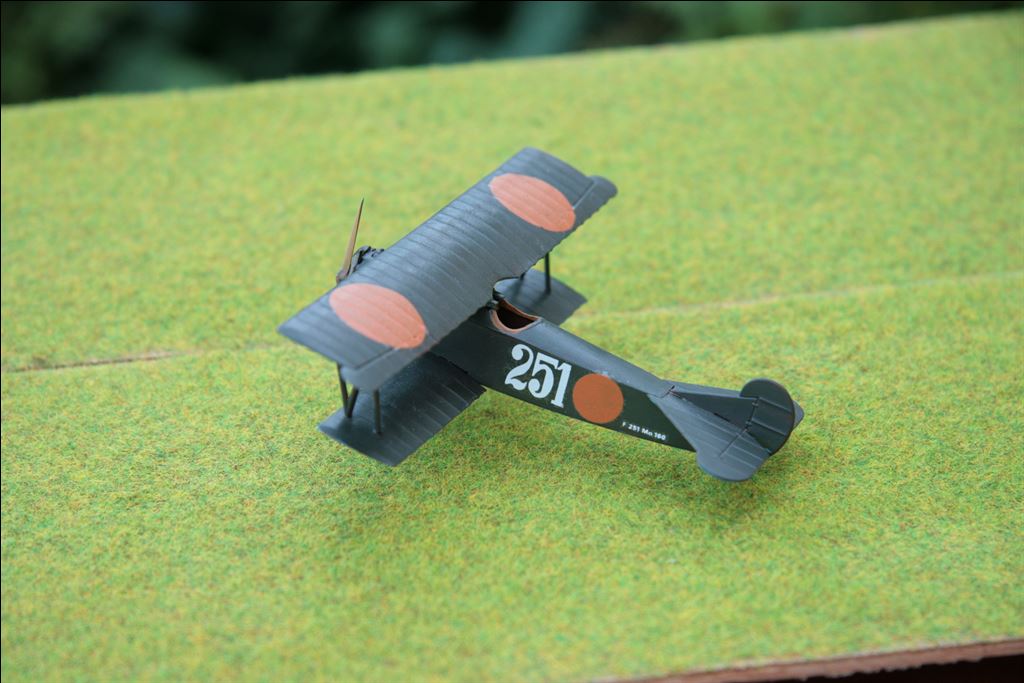
A model of a Fokker D.VII of the LVA, also built in 2005.
The kit used is also from Revell, with decals from Blue Rider.

Modelling add-on
- Part Etchings
- Set S72-185: detaiset for Roden Fokker D.VII (Alb)
- Set S72-189: detaiset for Roden Fokker D.VII (Alb) Early
- Set S72-175: detaiset for Roden Fokker OAW D.VII Early
- Set S72-176: Fokker DVII OAW mid (Roden)
- Set S72-167: Fokker DVII (early)
- Set S72-169: Fokker DVIIF
- Loon Models
- Set 72205: correction set for Roden
- MAC Automodelle
- Set 72131: Fokker DVIIF "Udet"
- Set 72130: Fokker DVII Early "Goring"
- Set 72041: Fokker DVII (OAW
- Set 72040: Fokker DVII
Decals
- Dutch Decal:
- Dutch museum planes 1: set especially for the Dutch Military aviation Museum at Soesterberg with decals for several aircraft on display at the museum
- Set 72023: Set decals for e.g. Fokker D.VII, Fokker T.V; Douglas 8A-3N, etc. No longer available.
- Blue Rider
- BR212: set for a LVA and a MLD Fokker D.VII (and other types) both with the early national markings
1/48th Scale
Kits
- Dragon Models
- Kit 275908: Fokker DVII & 1/12 Ernst Udet Bust
- Kit 275905: Fokker DVII
- Eduard
- Kit 84156: Fokker DVII (MAG)
- Kit 1147: Fokker DVII (MAG) Dual combo
- Kit 8131: Fokker DVII (OAW)
- Kit 1139: Fokker DVII (OAW) " Sieben Schwaben"
- Monogram
- Kit 74005: Fokker DVII
- Roden
- Kit 420: Fokker DVII (OAW) Early
- Kit 418: Fokker DVII OAW Mid
- Kit 424: Fokker DVII (Alb built, late)
- Kit 420: Fokker DVII (Alb built, early)
- Kit 417: Fokker DVII (Fokker built, late)
- Kit 415: Fokker DVII (Fokker built, early)
- Smer
- Kit 0803: Fokker DVII
Modelling add-on
- Part Etchings
- Set S48131: Detailset Fokker DVII (late) (Roden)
- Set S48127: Detailset Fokker DVII (early) (Roden)
- Loon Models
- LO72205: correctie set t.b.v. Roden
Decals
- --
- Set --: --
| Scheme | Colour name | FS-nummer | WEM | Humbrol | XtraColor | Vallejo Model Color | Vallejo Model Air | |
|---|---|---|---|---|---|---|---|---|
| Fokker D.VII LVA | ||||||||
| Standard #1 | Upper surfaces | LVA Khaki | AC D04 | 29? / 155? | x2? /x251? | 70.921? / 70.887? | ||
| Undersides | LVA Blue | AC D05 | 115 ? | X-214? | ||||
| Fokker D.VII ML-KNIL | ||||||||
| Standard #1 | Upper surfaces | LVA Khaki | AC D04 | 29? / 155? | x2? /x251? | 70.921? / 70.887? | ||
| Wings | Aluminium Dope | ~7178 | 191 / 56 | X216 | 70.864 | |||
| Fokker D.VIIF MLD | ||||||||
| Standard #1 | Upper surfaces | LVA Khaki | AC D04 | 29? / 155? | x2? /x251? | 70.921? / 70.887? | ||
| Cowling of the modified aircraft initially bare metal, from 1928 and overall khaki. | ||||||||
For an extended conversiontable with very many colour and paint systems, check (does function with Firefox!) www.paint4models.com
Fokker D.VII LVA
Fokker D.VII RNlNAS (MLD)A
Fokker D.VII NEIAF (ML-KNIL)
Literature.
| Van Brik tot Starfighter | H. Hooftman | 1965 | Publisher: La Rivière en Voorhoeve - Zwolle | |
| Fokker, The creative years | R.J. Weyl | Pag. | 1965 | Publisher: Putnam, London |
| Nederlandse Militaire Luchtvaart in Beeld. deel 1. | Hugo Hooftman | Pag. 74 - 83 | 1977 | Publisher: Europese Bibliotheek, Zaltbommel |
| Zestig jaar Marineluchtvaartdienst in Beeld. | Hugo Hooftman | Pag. 25 - 27 | 1977 | Publisher: Europese Bibliotheek, Zaltbommel |
| Militaire Luchtvaart in Nederlandsch-Indië in beeld. Deel 1 | Hugo Hooftman | Pag. 48 - 53 | 1978 | Publisher: Europese Bibliotheek, Zaltbommel |
| Nederlandse Marinevliegtuigen | Thijs Postma & Nico Geldhof | Pag. 12 | 1978 | Publisher: Omniboek, 's Gravenhage |
| Fokker, Bouwer aan de wereldluchtvaart | Thijs Postma | Pag. 38 - 39 | 1979 | Publisher: Unieboek b.v., Houten |
| AVIA: 41e jaargang nummer 4: Veel belangstelling voor veteranen: Fokker koopt D-VII | Bart van der Klaauw | Pag. 146 - 147 | 1982 | Publishers Wyt, Rotterdam |
| AVIA: 41e jaargang nummer 8: Botsing boven de Haarlemmermeer. Een botsing en een afscheid | H.J. van Overvest | Pag. 312 - 313 | 1982 | Publishers Wyt, Rotterdam |
| Fokker-vliegtuigen voor de Militaire Luchtvaart | Pag. 2 | 1982 | ||
| Squadrons van de Koninklijke Luchtmacht | Willem Helfferich | Pag. 13 | 1983 | Publisher: Unieboek b.v., Houten |
| 40 Jaar luchtvaart in Indië | Gerard Casius & Thijs Postma | Pag. 21 - 24 | 1986 | Publisher De Alk, Alkmaar |
| 70 Jaar Marine-LuchtvaartDienst | Nico Geldhof | Pag. 19 | 1987 | Publisher Eisma b.v., Leeuwarden |
| KLu Vliegtuigen: De vliegtuigen van de Koninklijke Luchtmacht vanaf 1913 | Wim Schoenmaker & Thijs Postma | Pag. 15 - 32 | 1987 | Publisher De Alk, Alkmaar |
| Nederlandse Militaire Luchtvaart 2: Fokker D.VII | Nico Geldhof | Pag. | 1988 | Publisher: St. Vrienden v.h. Mil. Luchtv. Museum, Soesterberg |
| DemoTeams van de Koninklijke Luchtmacht | Antoon Louwers | Pag. 5 - 10 | 1988 | Publisher De Alk, Alkmaar |
| Air Enthusiast 38: Airborne in the D.VII | H.J. van Overvest | Pag. 48 - 54 | 1989 | Publisher: Pilot Press Ltd., Bromley, Kent |
| Aircraft Archive Aircraft of World War One; Volume 2. | Pag. 75 - 77 | 1989 | Publisher: Argus Books, Hempsted | |
| Squadrons van de Koninklijke Luchtmacht (derde herzien druk) | Willem Helfferich | Pag. 15 - | 1994 | Publisher Wyt, Rotterdam |
| Air Enthusiast no. 61 The Historical Aviation Journal: Especially .. The D.VII | Owers, Colin | Pag. 52 - 63 | 1996 | Publisher: Key Publishing, Stamford |
| Camouflage en Kentekens | J.Greuter e.a. | 1997 | Bonneville – Bergen (NH) | |
| Air Enthusiast no.80 The Historical Aviation Journal: Unexpected Windfalls | Pag. 54 - 59 | 1999 | Publisher: Key Publishing, Stamford | |
| 85 JAAR Marineluchtvaartdienst in beeld Van Farman tot NH 90 Helikopter | Peter Korbee | Pag. 32 - 33 | 2002 | Publisher: Korbee MLD Promotie, Valkenburg |
| De Fokker D.VII | N. Geldhof | 2008 | Publisher: Geromy BV, Maarssen |
Websites.
- Fokker D.VII site of Hans Vossers
- Biplane.de
- Aircraftwalkarounds: Fokker D.VII
- Memorial.flight: Fokker D.VII
- Fokker-Team-Schorndorf: (bouwers van replica van Fokker D.VII!!)
- Wikipedia UK: Fokker D.VIII
- Wikipedia NLK: Fokker D.VIII
- Wikipedia DE: Fokker D.VIII
- Dutch Aviation: Fokker D.VII
- Aviation History.: Fokker D.VII
- LuftFahrt Museum: Fpokker D.VII
- Luftwaffe Museum: Fokker D.VII
- The Aerodrome: Fokker D.VII
- Fokker D.VII
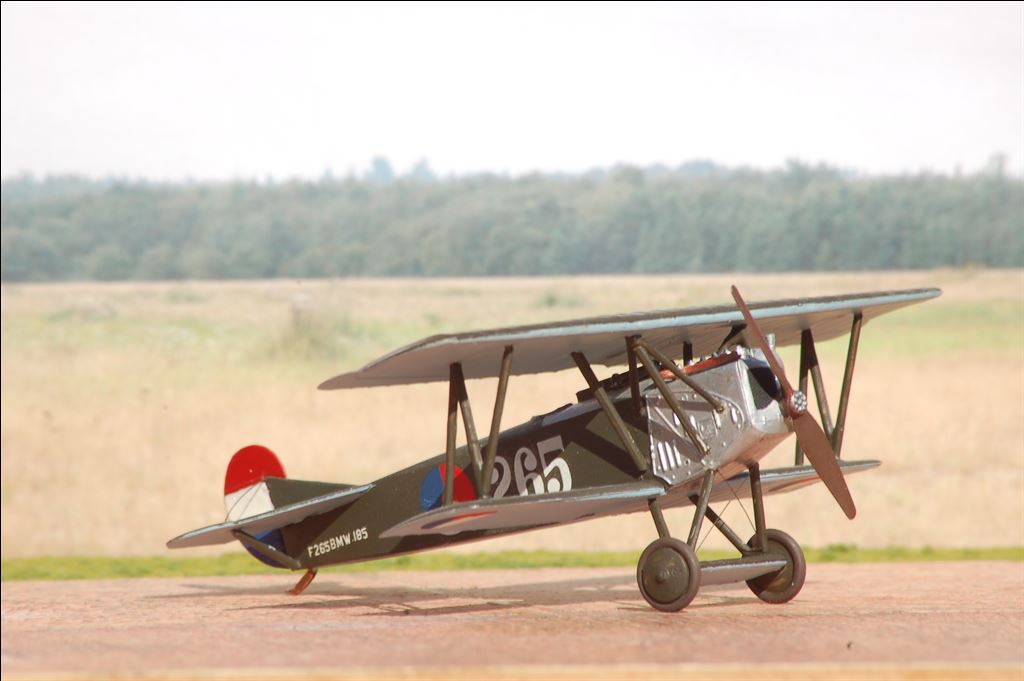


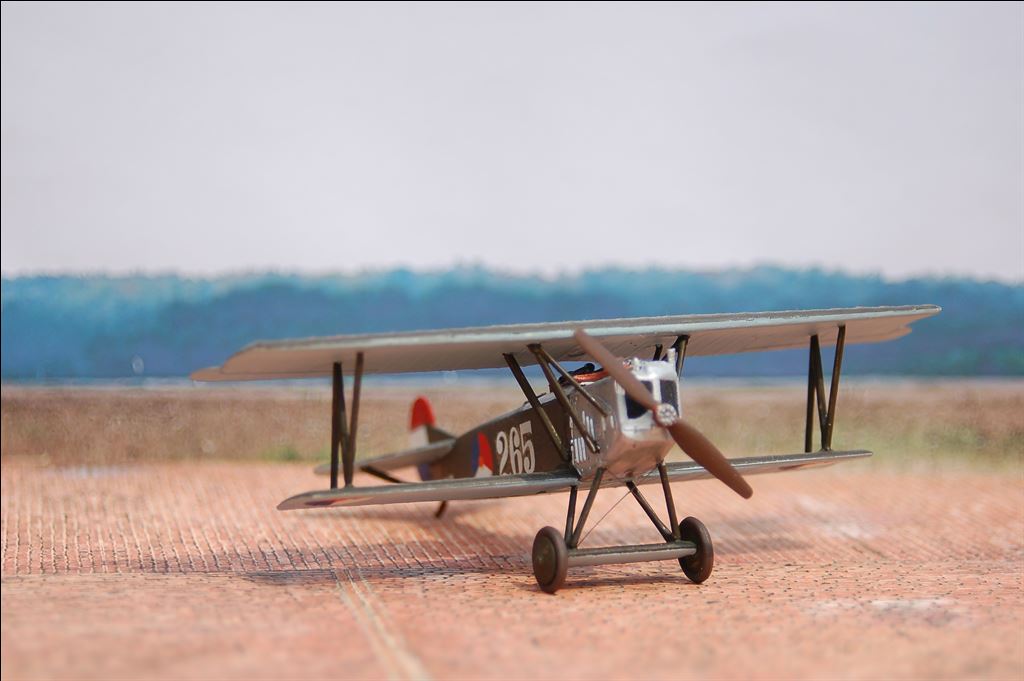
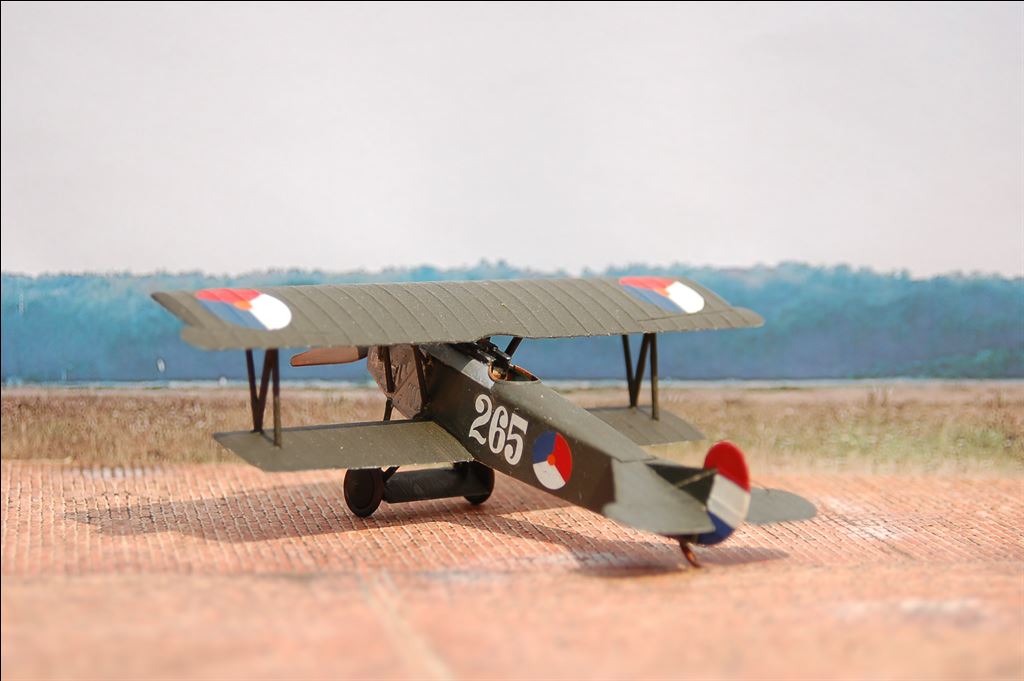
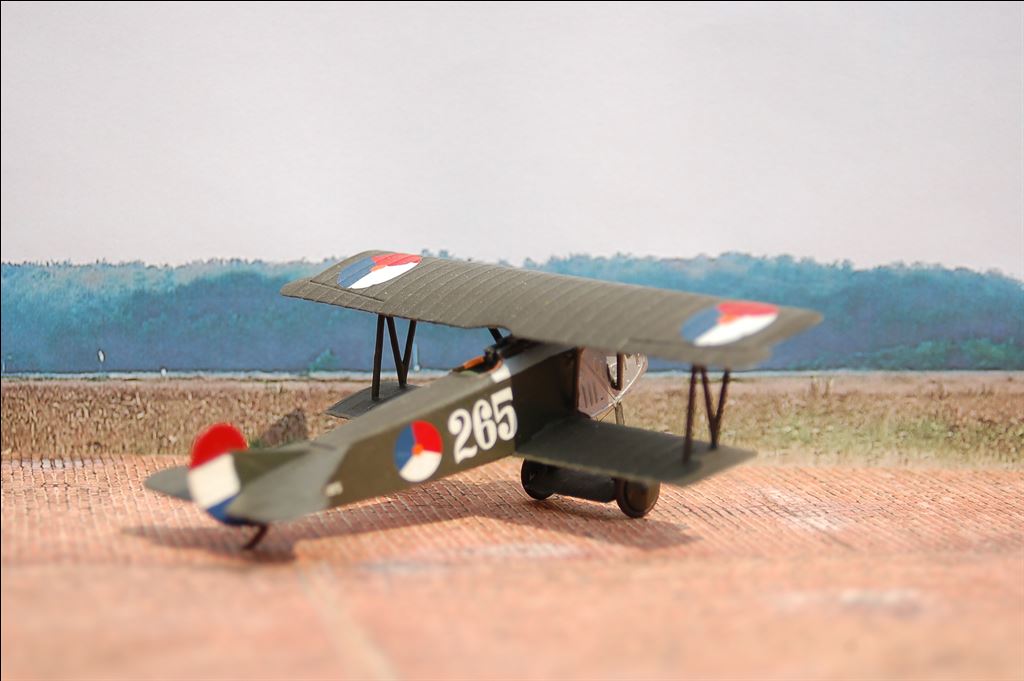
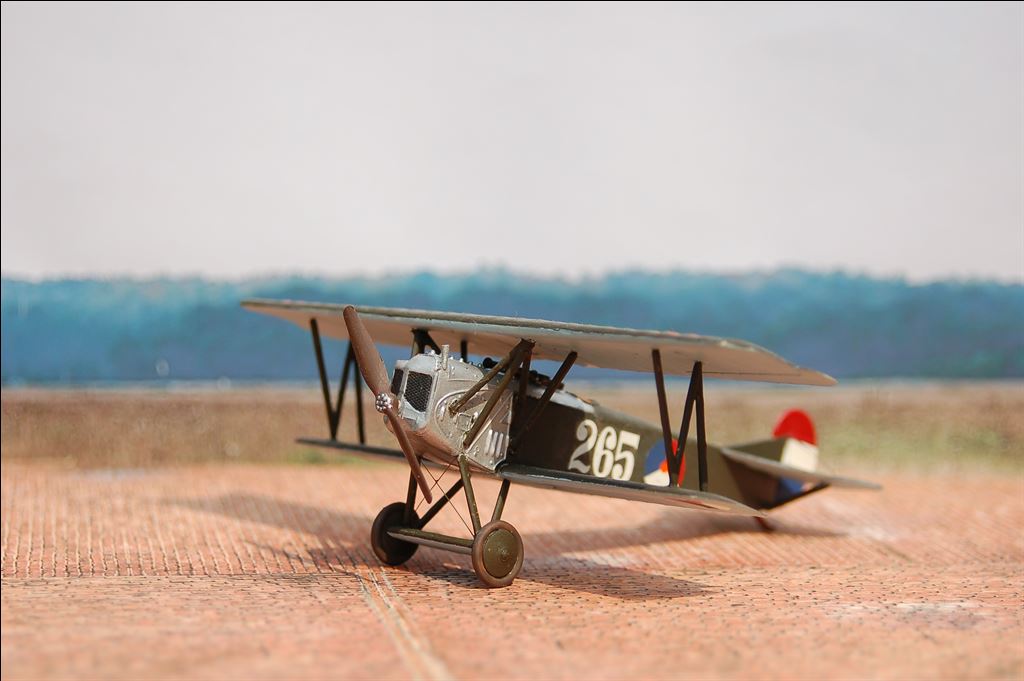


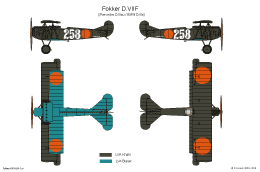


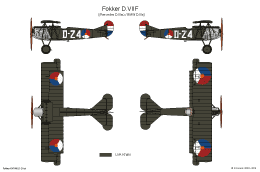

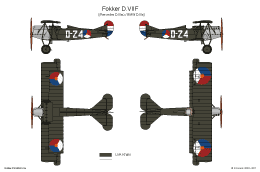
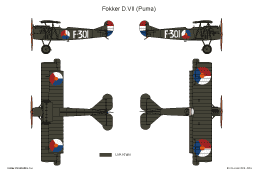
 Nederlands (nl-NL)
Nederlands (nl-NL)  English (United Kingdom)
English (United Kingdom)